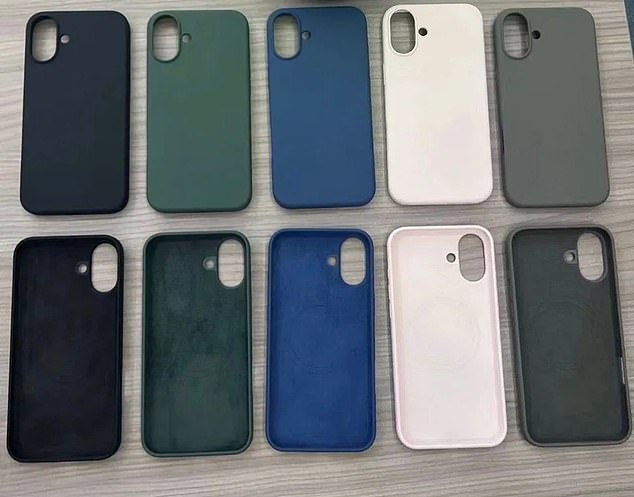Apple's iPhone 16 set for 'mind-blowing' camera upgrade
- READ MORE: Apple confirms rumored device proclaimed as a 'game-changer'
Apple's iPhone 16 is rumored to feature a 'mind-blowing' camera upgrade that would change the way users capture the world around them.
A tech expert has suggested that the iPhone 16 Pro and Pro Max could support a 100x zoom AI camera, which adds missing details to a photo to create clearer results.
The AI capabilities would be possible with Apple Intelligence, but the expert noted the high-end smartphones' new hardware would be the key to the enhance photography capabilities.
While the upcoming iPhones would be the first Apple devices to get a 100x zoom AI camera, Samsung and Google have long included the tech in their smartphones.

A tech expert has suggested that the iPhone 16 Pro and Pro Max could support a 100x zoom AI camera, which adds missing details to a photo to create clearer results
The upgrade was revealed on the 'Matt Talks Tech' YouTube channel this week, where Matt claimed he found 'breadcrumbs' in the iOS 18 system that proves the new system the public has called 'mind-blowing.'
The discovery was likely made in the beta version of the operating system, which developers typically use to test new features for bugs.
The upgraded zoom is due to Apple adding AI to iOS 18, which will provide editing tools.
But Matt claimed the new technology combined with the super telephoto periscope camera also rumored for the high-end iPhones would give Apple the tools for a 100x zoom AI camera.
Periscope telephoto cameras use prisms and mirrors, allowing for a longer focal length or higher optical zoom without increasing the phone's thickness.
The periscope camera is believed to feature a focal length over 300mm, compared to the 120mm focal length in the iPhone 15 Pro and Pro Max that provides 5x zoom abilities.
Focal length is the distance in millimeters from the center of a camera lens to the image sensor on the camera.
'A 300mm focal length could equate to around about 12 or 13 times zoom capabilities and then chuck in some Apple Intelligence on the digital zoom ability, we could get even more zoom capability,' said Matt.
He provided an example of how a 100x zoom AI camera would work, using the Samsung Galaxy s24 Ultra.
The smartphone can take photos at up to 100x zoom, making pictures clearer and allowing users to clean up images with the built-in AI functions.

Tech experts claimed to have found images of cases for the iPhone 16, which showed a sleeker, pill-shaped camera system capable of capturing 3D 'spatial video' for replay on Apple's Vision Pro VR headset
'They're not the only ones who do it either, Google does this quite a lot' Matt said.
'Google, for example, with their Pixel phones also have a 5x telephoto that can go up to a 30x digital zoom.'
The camera typically sees the biggest redesign in Apple's latest smartphones as the device itself has largely stayed the same since the iPhone X launched in 2017 with an edge-to-edge screen display.
Apple has said the lack of changes is to keep true to the brand and maintain consistency.
But the camera is the one feature that continues to change with the times.
Tech experts claimed to have found images of cases for the iPhone 16, which showed a sleeker, pill-shaped camera system capable of capturing 3D 'spatial video' for replay on Apple's Vision Pro VR headset.
The change would be a far cry from the current iPhone layout that features a clunky diagonal camera design.
Up until now, only the iPhone 15 Pro had the capacity to record the kind of uncanny and fully immersive 3D 'spatial video' for viewing on the Vision Pro headset.
These vertically stacked cameras on the iPhone 16 and 16 Plus would be the first major switch in alignment since the diagonally aligned lenses were first introduced with the iPhone 13's debut in September 2021.
The new alignment, according to this report, will allow the phone to capture footage from both its main and ultrawide cameras at the same time.
The synthesis of those two video feeds will allow even the lower-end iPhone 16 and iPhone 16 Plus to create video with a sense of depth that creates the illusion of watching a real-life scene unfold right before your eyes.



















































































































































































































































 How the FBI identified Trump shooter Thomas Matthew Crooks within hours - and how they could do the same for YOU
How the FBI identified Trump shooter Thomas Matthew Crooks within hours - and how they could do the same for YOU